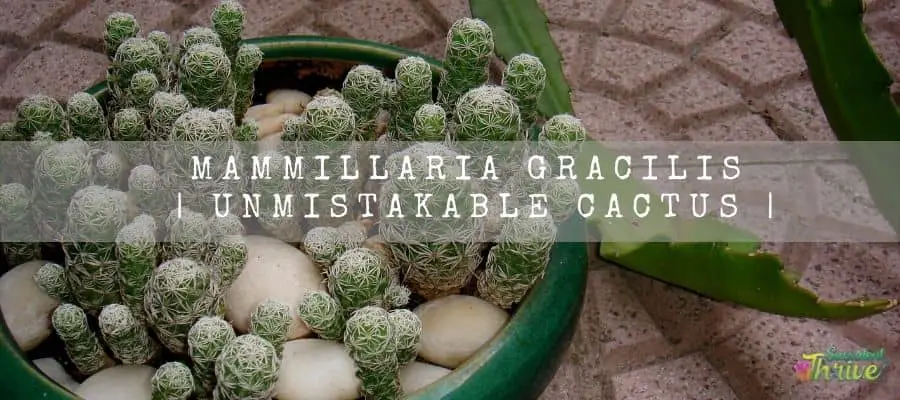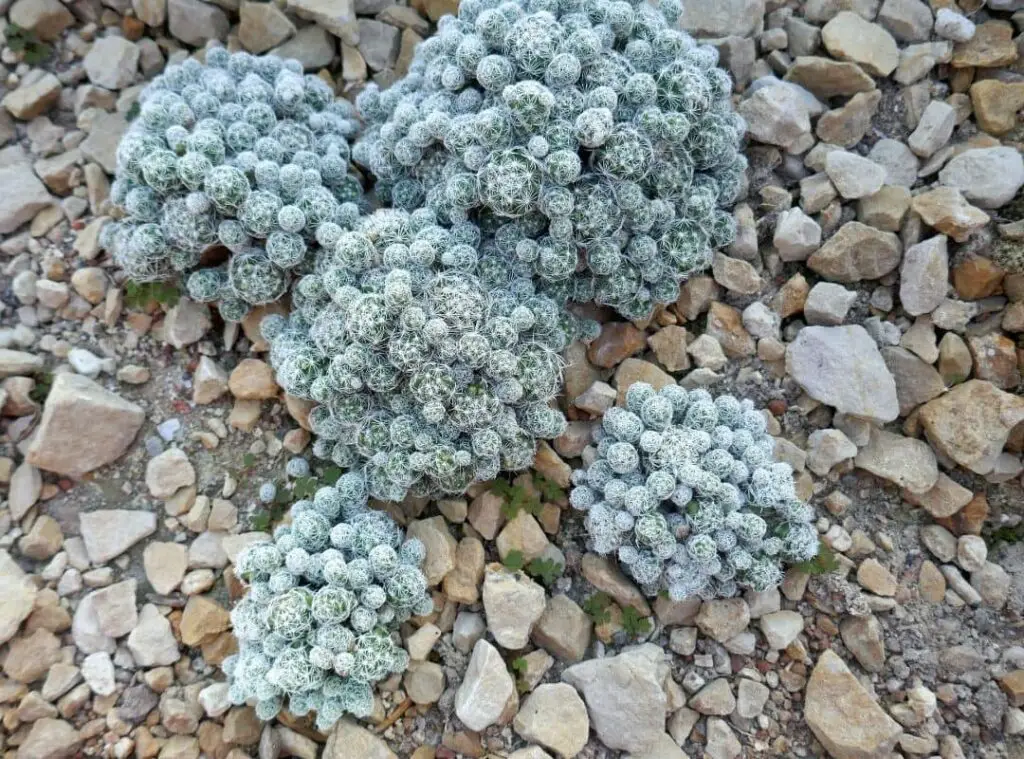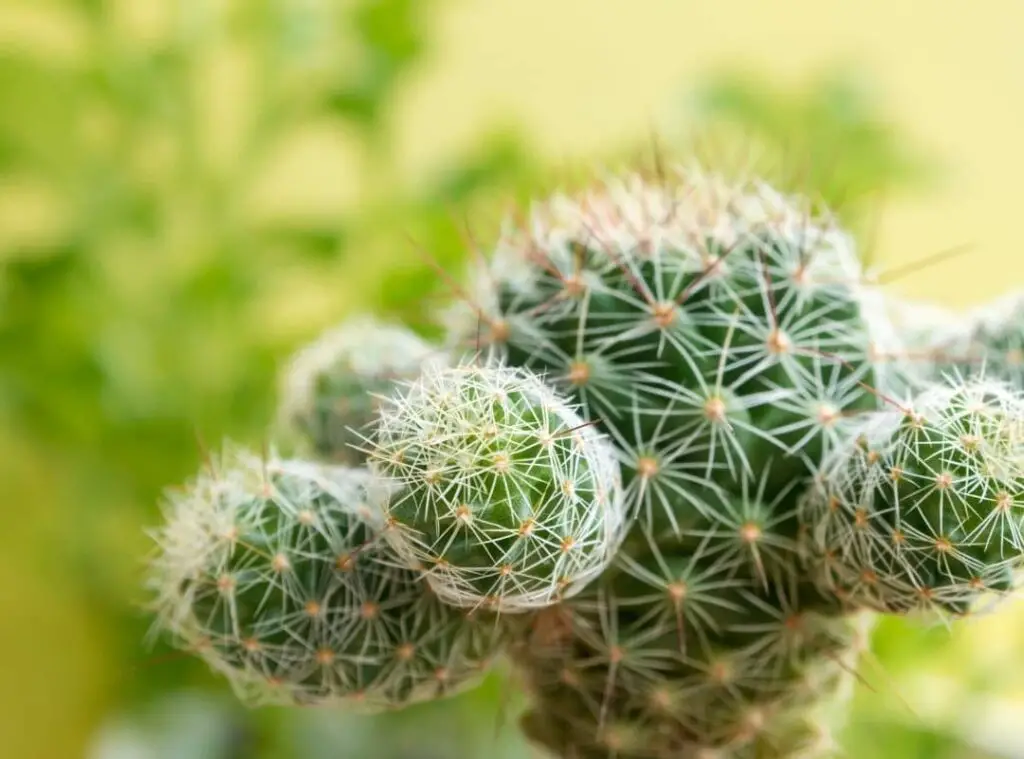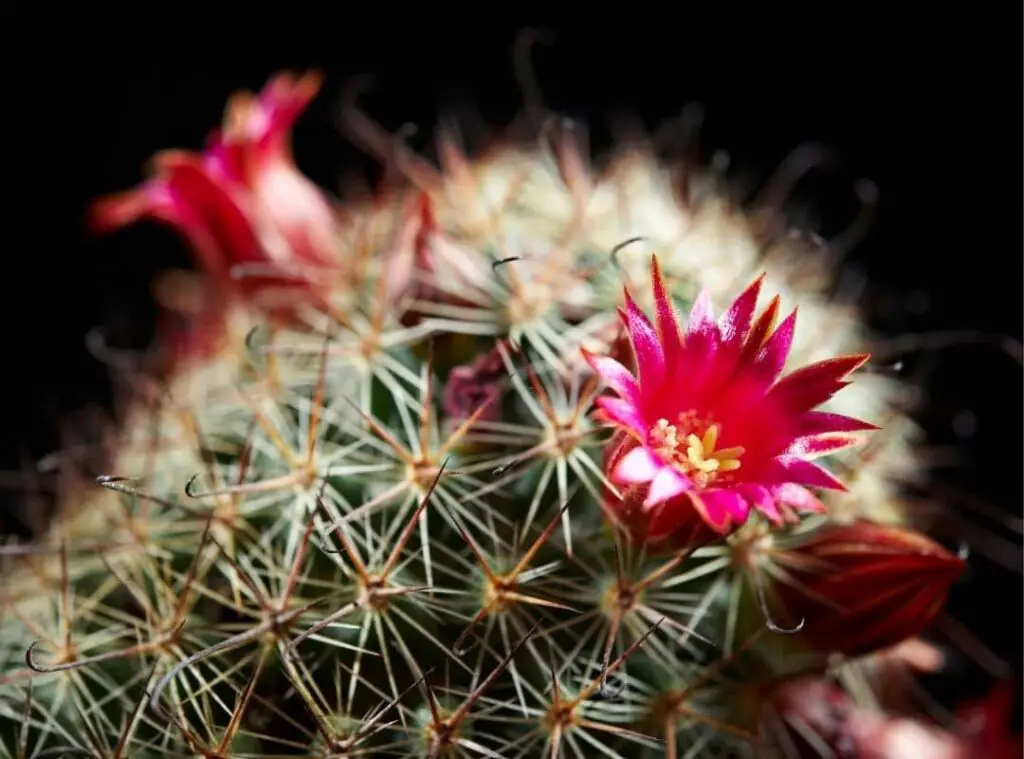If you are looking to add a spectacular green addition to your indoor garden collection, I suppose Mammillaria gracilis would be the one to try out. You can grow these plants with minor supervision as they can self-sustain just like the other succulents.

So, if you are someone who doesn’t have much time to spare on gardening, I urge you to go ahead with growing the Mammillaria gracilis plants. In addition to that they can withstand the full sunlight as well. They are called Thimble cactus in general. The beauty of these plants is second none another as they are so adorable in the looks.
Mammillaria gracilis plants are native in central Mexico. The Mammillaria genus consists of about 300 species of highly variable forms. These are a highly prized cactus succulent which many collectors and gardeners tend to grow. The appealing looks of the plants is what attracts the succulent enthusiasts. In addition to the common name called Thimble cactus, they are also called powder-puff, powder-puff pincushion etc. These are small made cactus and would tend to grow in clusters. They would add so much grace and color to your garden too.
So, if you read this article until the end, you can learn everything you need to know when growing these plants. Lets resume learning about these super hardy Mammillaria gracilis plants.
How do I identify Mammillaria gracilis?
Mammillaria gracilis have their own unique looks and it is very easy to identify them simply by looking at them. They are small cacti. Their foliage would be somewhat slender and cylindrical in shape. Further they would tend to take a bright green color as well. further you could spot them producing offsets freely around the base of the plants.
Mammillaria gracilis tubercles would tend to take a round shape. Further you can see the tips of the plants carrying white spines too. The white spine formation would radiate like a star. One might think the plant is covered with a lace cover. Mammillaria gracilis plants comprise multiple central spines.
Occasionally they may comprise one central spine too. The central spine would be dark brown in color. Further, Mammillaria gracilis central spine would be about 10-12 m in length. They would form in a straight way. Besides that they may also develop radial spines which would be about 3-8mm in length. They would be chalky and white in color. Those radial spines would tend to look like needles.
Mammillaria gracilis plants may develop flowers in creamy white color. Further they would be bell shaped too. You could spot them blooming in late summer -autumn. Flowers would be less than 12 mm in size. The plant’s stems would tend to take a cylindrical shape. They would grow as tall as 13 cm in length. Furthermore they would be about 3 cm in width too. You could spot them bright green in color. Lastly they would produce a fruit in black as well.
Size of the plant
Mammillaria gracilis plants would reach a maximum height of 13 cm when they grow to their best potential. Furthermore, they would be about 3 cm broad too.
Growth rate
Mammillaria gracilis plants are growing at a slow pace.

One look care guide
| Botanical Name | Mammillaria gracilis |
| Common Name | Thimble cactus |
| Plant Type | Cactus |
| Mature Size | 13 cm height and 3cm broad |
| Sun Exposure | Full sunlight to partial shade |
| Soil Type | Well draining |
| Soil pH | PH ranges between 6.1 and 6.5. |
| Bloom Time | spring or in late summer -autumn. |
| Flower Color | Pale white |
| Hardiness Zones | USDA hardiness zones 8-10. |
| Native Area | Mexico |
| Toxicity | Non Toxic |
| Average price | 12 usd |
How do you take care of Mammillaria gracilis?
Light Requirement
Succulents require full sunlight to reward you with their best growth. Failure to expose them for adequate sunlight would make them develop leggy growths and Mammillaria gracilis plants are no different to them. Having said that, they can also survive in moderate lighting levels. However, they would prefer to grow under full sunlight when the conditions are not too intense.
So, I suppose the best place to plant the Mammillaria gracilis indoors is by a bright sunny window. With that being said, if the plants are deprived of ample sunlight, you can consider bringing them outdoors during summer. However, when you do that you should slowly acclimate the plants to full sunlight without exposing them to full sunlight abruptly.
Temperature and humidity
Thimble cactus adapted to grow in hot and arid areas in Mexico. So, it literally means the plants are hardy and tolerant of tough conditions. Mammillaria gracilis plants are extraordinary plants as they can tolerate both scorching temperature as well as light frost. To be more precise they can tolerate temperatures which drop to 0 degrees Celsius / 32 degrees Fahrenheit.
However, they are tolerant of colder temperatures for shorter periods only. Ideally Mammillaria gracilis plants need to go through some cooler conditions at the end of summer so that it would make the plants look spectacular. Keep in mind that lower temperatures and less watering would stimulate the flower blossoming of the plants.
Is it cold hardy?
Mammillaria gracilis plants are somewhat cold hardy. To be more precise they can withstand colder temperatures up to 0 degrees Celsius ( 32 degrees Fahrenheit).
Growth Zone
Mammillaria gracilis plants would grow well in USDA hardiness zones 8-10.

Watering Requirement
Many succulent enthusiasts tend to make mistakes when watering the Mammillaria gracilis plants. One might find it difficult to figure out whether it is the right time to water the plants or not. Keep in mind that watering frequency would vary depending on the sunlight levels , the weather conditions etc.
Succulents have the special ability to conserve water which is in contrast with other regular plants. Due to that, you can neglect watering them once or twice and it would not make any greater impact on the plants. Make sure you allow the plants to dry between two watering sessions.. Having said that, do not let the soil become bone dry as it would also be unhealthy on the plants. I suggest you water them once or twice a week when they are actively growing. If you have grown them indoors, you can water them even less than that. You can water them less frequently during colder conditions.
Soil Requirement Type / pH
A well-draining soil mix is mandatory for these plants to grow well. If the plants are exposed to wet conditions, you can consider adding pure grit so that it would avoid any potential of root rot. =Many succulent lovers tend to make a soil mix on their own by mixing 50 % potting soil into 50 % perlite and Mammillaria gracilis plants would grow well in those conditions.
Besides, many opt to purchase the fast-draining soil mixes from the garden stores and from nurseries as well. However, when you purchase them , make sure that you select a soil mix which is not too rich in potting soil as then it would not encourage a fast draining.
Pot size Potting and Repotting
Mammillaria gracilis plants would opt to grow in any planter as long as they are porous. Once you select a container which has a higher porosity, it would help the plants to evaporate excess water faster. In addition to that, you need to check whether the planters have one or two draining holes too.
Repotting wise, you can do it occasionally if the requirement comes. Bear in mind that Mammillaria gracilis plants are slow growing plants so you can do it less frequently. However, if you transplant them periodically, it will help the plants to grow in fresh growing conditions. If you keep growing them in the older soil mix for too long, the nutrients would be depleted.
Where to Plant
You can plant the Mammillaria gracilis anywhere as long as they can fulfill their sunlight requirement. Furthermore, when you cultivate them indoors, you can grow them in planters. Furthermore, keep in mind to provide an excellent draining soil medium too.
Fertilizer and time of year
Mammillaria gracilis plants are not heavy dependents on fertilizing. A cactus fertilizer would suit them the best. I urge you to apply it when they are actively growing. Never apply fertilizers when they are dormant. They would literally be relaxing during their dormancy as they would not consume any energy during their season.
Flower
It would be so pleasing to watch them in full blossom. They would emerge flowers in pale white. Those flowers would tend to take a circular shape and would arise from the tubercles of the plants. Their flowering seasons would be spring or in late summer -autumn.

Dormancy
Mammillaria gracilis plants go into dormancy during winter.
Toxicity
Mammillaria gracilis plants are nontoxic plants. Hence, you can grow them without any hassle even if you have kids or pets at home. Having said that, Mammillaria gracilis plants don’t come up with spines so it will not injure you when you are dealing with the plants.
Common bugs and illnesses
Chances are that domestic pests such as Mealybugs, aphids and from scales may tend to infest the plants if they feel welcome towards the plants. If you ever come across any situation where you have to deal with these, first and foremost what you could do is quarantine the plants so that it would avoid a further spread among the other plants.
You may consider using appropriate fungicides to treat these plants also. If they have infested the plants on a severe level, you may consider repotting the plants. I urge you to keep the plants surrounding tidy and neat so that it would be less attractive for these pests. Lastly, you may have to encounter root rot if you have over-watered the plants. Over watering would pave the way for root rot as well as for other bacterial and fungal infections. It is crucial that you water them moderately without over watering as root rot could turn out to be lethal on the plants.
Special Care tips
Growing the Mammillaria gracilis plants is quite simple. Always bear in mind that they need adequate sunlight and that they need to be secured from extreme colder conditions. Watch out for root rot and if you see any early sign of root rot you need to get rid of the faster you can. If you see the plants are overcrowded, the best would be to conduct transplanting at that point. When you repot keep in mind that you need to snip off the dead and decaying roots from the plants.
Mammillaria gracilis benefits
Many people tend to grow the Mammillaria gracilis plants as decorative plants. Mammillaria gracilis plants spectacular flower blossoms would enhance the beauty of the entire space wherever you grow them. They would make excellent additions for fair gardens as they usually grow in clusters. Not only that but also, they would be handy to use in rock gardens as well as in cactus gardens also.

How to propagate Mammillaria gracilis
I recommend you propagate the Mammillaria gracilis plants using their offsets as it is quite easy. You simply have to take off the offsets gently from the parent plants. Next allow them to wither by keeping them on a paper towel for one or two days’ time. Watch them closely and see whether they have developed callous over the cuttings. Next, take a fresh pot and place the plants in the pot. Next you can leave the pot in a warmer place but not exposed to direct sunlight as it would result in adverse repercussions. If you spot, they have developed new roots you can pot them in new pots.
Conclusion
To recap what we covered in the above article, Mammillaria gracilis plants are a super hardy versatile set of plants which anybody would never hesitate to have. They are adorable and super cool plants which would bring a sense of freshness and glamor. The correct watering practice, proper exposure for sunlight and an excellent draining soil mix would help them to flourish.
Read Next : Amazing Echeveria Nodulosa Benitsukasa Care
